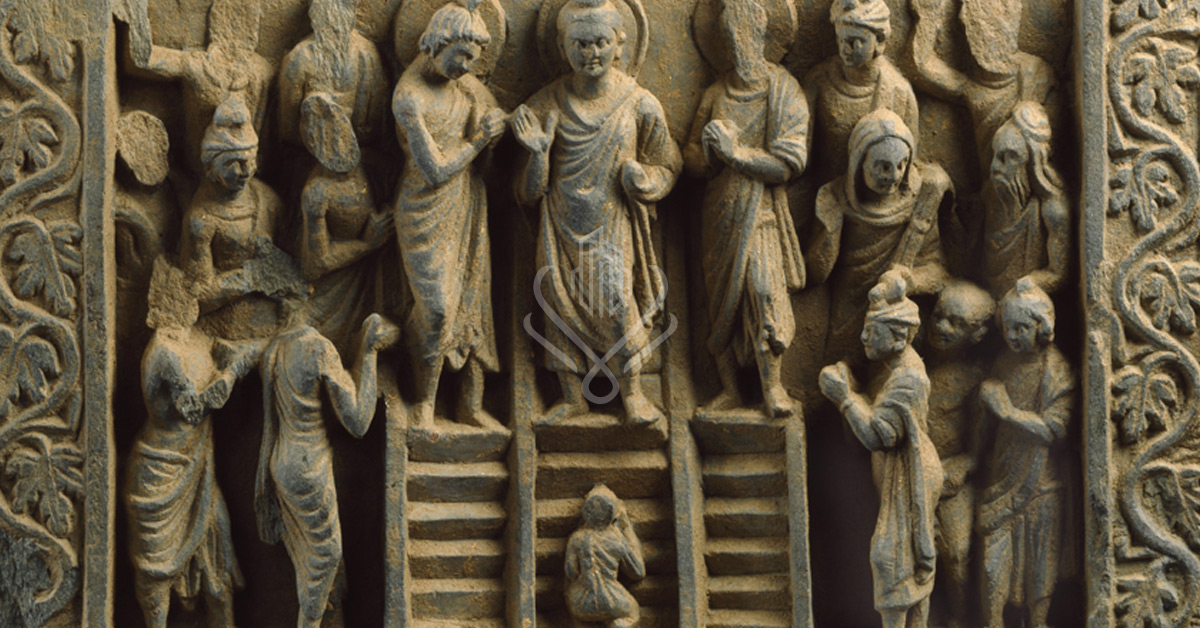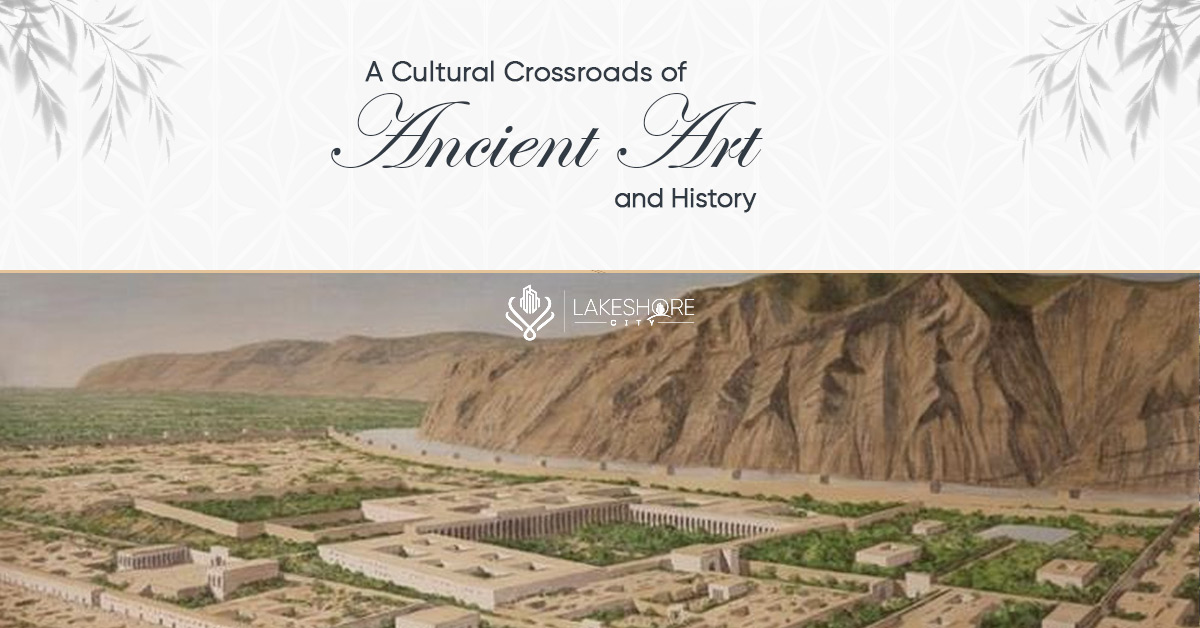GANDHARA CIVILISATION
The Rigveda makes the first mention of Gandhara, the ancient Peshawar Valley, and the birthplace of Buddhist civilization that gave rise to the renowned Gandhara Art. One of the Achaemenid Empire’s provinces was mined, as per a sixth-century Darius period inscription. AD. Its first capital, Pushkalavati (Bala Hisar-Charsadda), dates to the sixth century. In 327 BC, Alexander the Great invaded AD. Afterward, the Parthians, Mauryans, Indo-Greeks, Scythians, and Kushans took turns ruling.

In the first century AD, they established Pushapura or Peshawar as their capital. The Shahi Dynasty established its capital at Hund in the seventh century AD, and it continued to be their hub. The invasions of the Ghaznavids in 998 AD brought an end to Gandhara’s rule.
The locations and artifacts of Sahri Bahlol, Jamal Gahi, Rani Gut, Aziz Dheri, and Takht-i-Bhai.The richest collection of Gandhara art was prompted by Butkara, Saidu Stupa, Andan Dheri, Chat Pat, Dam Kot, Khanpur, and the monasteries in the Taxila Valley.
Through the excavations of British, Italian, and Pakistani scholars, the museums of Peshawar, Mardan, Pushkalavati, Taxila, Swat, and Dir were established.
GANDHARA ART
With influences from Greek, Roman, Indian, and indigenous artists, the cosmopolitan art of Gandhara first emerged in this region in the first century BC, grew stronger in the first, flourished until the fifth, and persisted until the eighth century AD. The intention was to spread Buddhism through sculptures created from stone, stucco, terracotta, and bronze that were primarily kept in stupas and monasteries. During his visit to Gandhara in the sixth century AD, the Chinese pilgrim Hiuen Tsang made mention of thousands of these stupas.

The life stories and individual images of the Buddha, along with his past birth stories, known as jatakas, and Bodhisattvas, or future Buddhas, were the main subjects of the artwork. Buddhas after enlightenment. The historical Buddha is the most significant, and every moment of his life, from conception to death, is exquisite.
The Buddha’s personality served as an inspiration for the artists, who borrowed themes and techniques from the Greeks, Romans, and Persians, giving the Buddha eternal life.
The Buddhist text is followed in the carving of the Buddha’s life stories. These were written in Peshawar during the reign of Emperor Kanishka. The Buddhist Mahayana religious text and philosophy were translated into stone by the sculptors of Gandhara, adding a romantic touch and laying the groundwork for the religion’s spread by pilgrims and traders along the Silk Road to China and other parts of Asia.
The sculptures were affixed to the Stupas’ bases, drums, and stairs, which the worshippers walked around. In addition, life stories of the Buddha were carved on all sides of the harmika, or the square-shaped solid box above the stupa’s dome.
The stories were engraved on stone tablets and affixed to the stupa that housed a casket containing Buddha relics for worship. The Gandhara Art which originated primarily in the region ruled by the Kushanas is far more exquisite and sophisticated than the modern Mathura Art of India.
Conclusion
In conclusion, the Gandhara Civilization and its art have left an indelible mark on the history of South Asia and the development of Buddhism. This ancient region, nestled in what is now Pakistan and Afghanistan, served as a crucible of cultural and artistic exchange, drawing inspiration from Greek, Roman, Indian, and indigenous traditions. The rich tapestry of Gandhara art, with its exquisite sculptures in stone, stucco, terracotta, and bronze, played a pivotal role in propagating Buddhist teachings through visual narratives.
The art of Gandhara, which flourished from the first century BC to the eighth century AD, focused on depicting the life stories of the Buddha, the Jatakas (past birth stories), and Bodhisattvas. The fusion of artistic influences and techniques from various cultures gave the Buddha an eternal and timeless presence in the region. The translation of Buddhist Mahayana religious texts into stone carvings allowed for the dissemination of Buddhist philosophy and teachings along the Silk Road to China and other parts of Asia.
Gandhara art’s enduring legacy is not only seen in the intricate sculptures but also in the architectural elements of stupas and monasteries. The meticulous carvings on stupa bases, drums, stairs, and harmikas, as well as the use of stone tablets with Buddha relics, created a vibrant visual narrative for worshippers. This art form’s sophistication and intricacy set it apart from contemporaneous art in neighboring regions.
Gandhara’s history is a testament to the dynamic cultural exchanges that have shaped the subcontinent’s heritage. Through the ebb and flow of empires, from the Achaemenians to the Kushans, and the establishment of capitals such as Pushkalavati and Peshawar, this region has endured as a cradle of Buddhist civilization and artistic innovation. The eventual decline of Gandhara’s rule with the invasions of the Ghaznavids in 998 AD marked the end of a glorious era, but the legacy of its art continues to inspire and captivate art enthusiasts and historians worldwide.
The painstaking efforts of British, Italian, and Pakistani scholars in uncovering and preserving Gandhara’s artifacts and historical sites have contributed to our understanding of this remarkable chapter in human history. Museums in the region, including Peshawar, Mardan, Pushkalavati, Taxila, Swat, and Dir, house invaluable collections that offer a window into the rich tapestry of Gandhara’s art and culture.
In essence, the Gandhara Civilization and its art represent an extraordinary cultural and artistic crossroads, where diverse influences converged to create an enduring legacy that continues to resonate with the world today, as a testament to the profound impact of Buddhism and artistic expression on the region.
FAQs
Q1: What is the significance of the Rigveda’s mention of Gandhara in ancient history?
Ans 1: The mention of Gandhara in the Rigveda is significant as it marks one of the earliest references to this region, shedding light on its ancient roots and historical importance. This reference helps us understand the early connections between the Indian subcontinent and the Gandhara region.
Q 2: How did the cosmopolitan art of Gandhara emerge, and what were its primary influences?
Ans 2: The cosmopolitan art of Gandhara emerged in the first century BC and was influenced by a blend of Greek, Roman, Indian, and indigenous artistic traditions. This amalgamation of diverse influences resulted in a distinctive and captivating artistic style.
Q3: Who were the major rulers and empires that governed Gandhara over its history?
Ans 3: Over the centuries, Gandhara was ruled by various powers, including the Achaemenians, Mauryans, Indo-Greeks, Scythians, Kushans, and the Shahi Dynasty. Understanding these different rulers and their contributions is essential to comprehending the region’s historical evolution.
Q4: What were the key subjects and themes of Gandhara art, and how did they relate to Buddhism?
Ans 4: Gandhara art primarily focused on depicting the life stories of the Buddha, the Jatakas (past birth stories), and Bodhisattvas. These artworks were instrumental in spreading Buddhist teachings and philosophy, making them essential to the development of Buddhism in the region.
Q 5: How did Gandhara’s art contribute to the propagation of Buddhism along the Silk Road?
Ans 5: The translation of Buddhist Mahayana texts into stone carvings and their placement on stupas and monasteries served as a means of spreading Buddhist teachings along the Silk Road to regions like China. This played a pivotal role in the global dissemination of Buddhism.
Q 6: What is the significance of the region’s capital cities, such as Pushkalavati and Peshawar?
Ans 6: The establishment of capital cities like Pushkalavati and Peshawar underscores the region’s historical and political importance. These cities served as centers of cultural exchange and governance, shaping the course of Gandhara’s history.
Q 7: What were the distinctive architectural elements of Gandhara’s stupas and monasteries?
Ans 7: The architectural elements of Gandhara’s stupas and monasteries included intricate carvings on stupa bases, drums, stairs, and harmikas. These features were not only decorative but also served as visual narratives for worshipers and added to the region’s unique artistic legacy.
Q 8: How did the decline of Gandhara’s rule come about, and who were the key actors in this process?
Ans 8: The decline of Gandhara’s rule occurred with the invasions of the Ghaznavids in 998 AD. These invasions marked the end of a flourishing era and had significant consequences for the region’s history and culture.
Q 9: What role did British, Italian, and Pakistani scholars play in preserving Gandhara’s artifacts?
Ans 9: British, Italian, and Pakistani scholars played a crucial role in excavating, researching, and preserving Gandhara’s artifacts and historical sites. Their contributions have been invaluable in our understanding of the region’s cultural and artistic heritage.
Q10: What is the lasting legacy of Gandhara’s art, and how does it continue to influence the world today?
Ans 10: The lasting legacy of Gandhara’s art is seen in its profound impact on artistic expression and the propagation of Buddhism. Its influence can still be observed in the appreciation and study of this art form by enthusiasts, scholars, and historians worldwide. It serves as a testament to the enduring power of cultural exchange and artistic innovation.
Our Featured Article:
Read More: Chitral Valley: Discover The Untouched Paradise in Pakistan
Read More: Exploring District Gilgit: Gateway to Diversity and Natural Beauty
Don’t miss the chance to invest with Lakeshore! Secure your investment today by investing your financial investment with Lakeshore in the following available options like Lakeshore City, Lakeshore Club, and Lakeshore Farms.
For More updates, please Contact +92 335 7775253 or visit our website https://lakeshorecity.com/
Lakeshore City is the upcoming elite lifestyle at Khanpur Dam. Offering no parallel amenities for the members and owners of distinguished farmhouses.
Become Part of Luxurious Lifestyle
Contact: 0335 7775253



